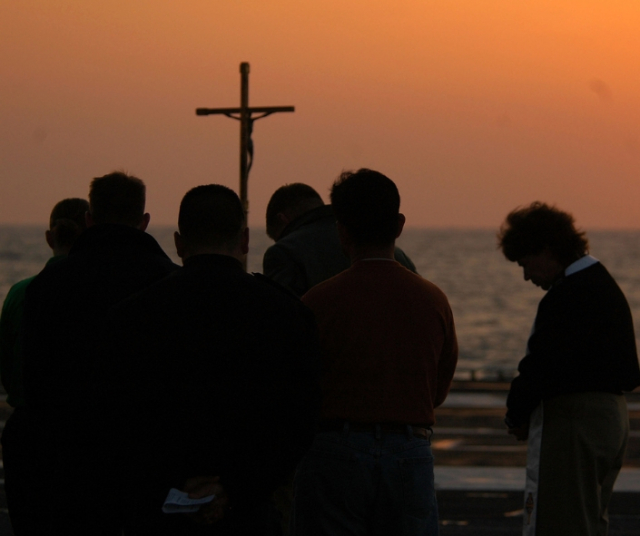Mexico , with its rich historical and cultural heritage, is a country that stands out for its diversity in many facets, including religious beliefs. From ancient pre-Hispanic civilizations to Spanish colonial influence and contemporary traditions, Mexico is a spiritual mosaic where a variety of religions and spiritual practices converge.
Religious Beliefs in the Pre-Hispanic Era
Mexico's religious history dates back millennia, before the arrival of the Spanish conquistadors in the 16th century. During this period, various pre-Hispanic civilizations, such as the Aztecs, Mayans, Olmecs, and Zapotecs , practiced a variety of polytheistic religions that worshiped multiple gods that represented aspects of nature and everyday life.
Aztec religion
The Aztecs, for example, worshiped deities such as Huitzilopochtli, the god of war, and Quetzalcoatl, the god of wisdom and the feathered serpent. They performed human sacrifices as part of their religious rituals to appease the gods and ensure the fertility of the land and the protection of their empire.
mayan religion
The Mayans, on the other hand, had a complex understanding of time and believed in the influence of the stars in daily life. They developed elaborate calendar systems and held religious ceremonies in temples and pyramids to honor their gods, including the sun god, Kinich Ahau, and the rain god, Chaac.
These pre-Hispanic religious beliefs played a fundamental role in the lives of the indigenous peoples of Mexico and left a lasting mark on the country's culture, which can be seen in today's festivities and traditions.
The Influence of the Catholic Religion in Mexico
The influence of the Catholic religion in Mexico is undeniable and profound. Since the arrival of the Spanish conquistadors in the 16th century, the Catholic faith has taken root in the lives of Mexicans and has become a fundamental pillar of culture and society. The evangelization and forced conversion of indigenous peoples by Catholic missionaries played a crucial role in this process.
A prominent symbol of this influence is the Virgin of Guadalupe, whose appearance on the Tepeyac hill in 1531 is considered a pivotal event in the conversion of indigenous people to Catholicism. The Virgin of Guadalupe is widely revered and has become the patron saint of Mexico.
Religious syncretism, which is the fusion of indigenous religious beliefs and practices with the Catholic faith, is a distinctive feature of religion in Mexico. This merger allowed the indigenous people to preserve their traditional beliefs while appearing to adopt the Catholic faith.
The Virgin of Guadalupe
One of the most iconic symbols of the Catholic religion in Mexico is the Virgin of Guadalupe. According to tradition, in 1531, the Virgin Mary appeared to an indigenous man named Juan Diego on Tepeyac Hill, near Mexico City. This apparition was a pivotal event in the conversion of the indigenous people to Catholicism and the Virgin of Guadalupe became the patron saint of Mexico.
Religious syncretism
Religious syncretism, which is the fusion of religious beliefs and practices, is a distinctive feature of religion in Mexico. Many of the ancient pre-Hispanic deities were assimilated into Catholic saints, allowing indigenous people to practice their traditional beliefs covertly under the guise of Catholicism. This syncretism is manifested in religious festivities and rituals that combine indigenous and Catholic elements.
Current Religions in Mexico
Today, Mexico is a diverse country in terms of religion, and various religious currents are present in Mexican society. Some of the most prominent religions and beliefs in Mexico include:
Catholicism
Catholicism remains the predominant religion in Mexico, with a large majority of the population identifying as Catholic. The Catholic Church plays an important role in the social and cultural life of the country, and religious holidays, such as Holy Week, are widely celebrated.
Protestantism and Evangelicals
In recent decades, there has been a significant increase in the Protestant and Evangelical population in Mexico. Protestant and evangelical churches have gained a following across the country, offering an alternative to traditional Catholicism.
Indigenous Religions and Spirituality
Indigenous spiritual beliefs and practices remain important in many rural communities in Mexico. These beliefs include the veneration of pre-Hispanic gods and the connection with nature.
Santeria and Witchcraft
Santeria and witchcraft are part of spirituality in some regions of Mexico, especially in rural areas. These practices often combine indigenous elements with African and European influences.
Alternative Religions and New Spiritual Movements
In Mexican cities, there has been an increase in the popularity of alternative religions and new spiritual movements, such as Buddhism, yoga, and meditation.
Religious Holidays in Mexico
Religious festivities play a central role in the lives of Mexicans and are an expression of their identity and culture. Some of the most important religious festivities in Mexico include:
Easter
Holy Week is one of the most significant religious festivities in Mexico. During this week, processions, representations of the Passion of Christ and other religious activities take place throughout the country.
Day of the Dead
The Day of the Dead is a unique celebration in Mexico that combines religious elements with indigenous traditions. During this holiday, homage is paid to deceased loved ones and it is believed that the souls of the deceased return to visit the living.
The inns
Las Posadas are a series of celebrations that begin on December 16 and culminate on December 24, representing María and José's search for a place to stay in Bethlehem. These festivities include processions, music, and prayers.
Mexico is a country that embraces a wide variety of religious and spiritual beliefs. Religious beliefs play a fundamental role in the daily life and festivities of Mexicans, and are an integral part of what makes Mexico a unique and diverse country.
